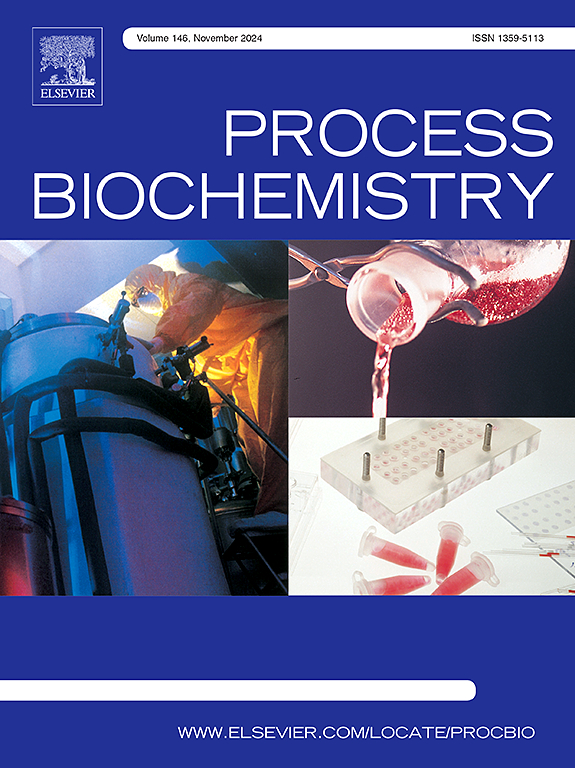Enhanced nitrogen removal in single-stage sequencing batch rotating biological contactors
IF 4
3区 生物学
Q2 BIOCHEMISTRY & MOLECULAR BIOLOGY
引用次数: 0
Abstract
The Rotating Biological Contactor (RBC), recognized for its energy efficiency, eliminates the need for aeration and sludge return in wastewater treatment. This study evaluates a Biocage-modified RBC, aimed at enhancing biomass retention and optimizing treatment efficacy. We compare continuous (C-DRBC) and sequential batch influent modes (SB-DRBC) concerning denitrification effectiveness. The continuous mode shows limited total nitrogen (TN) removal at 32.8 %, constrained by higher dissolved oxygen levels in the biofilm, which impede stable denitrification. Conversely, the SB-DRBC, operating at a hydraulic retention time of 6 h and a rotation speed of 3 rpm, substantially increases TN removal to 64.1 %. This enhancement is attributed to the development of an anoxic zone within the biofilm, conducive to denitrification. The biofilm's uptake of polyhydroxyalkanoates and glycogen metabolism by glycogen-accumulating organisms further augments nitrogen removal. Microbial analyses indicate a predominance of denitrifying bacteria such as Paracoccus, Thauera, and Azoarcus in the SB-DRBC mode. Reducing rotational speed fosters larger anoxic zones, thus elevating denitrification efficiency. These findings advocate the SB-DRBC approach as a formidable strategy for achieving efficient nitrogen removal and energy conservation in wastewater treatment.
单级测序间歇式旋转生物接触器对氮的强化去除
旋转生物接触器(RBC),公认的能源效率,消除了在废水处理中曝气和污泥回流的需要。本研究评估了一种生物膜修饰的红细胞,旨在提高生物量保留和优化处理效果。我们比较了连续(C-DRBC)和顺序批次进水模式(SB-DRBC)关于反硝化效果的影响。连续模式显示总氮(TN)去除率有限,为32.8% %,受生物膜中较高的溶解氧水平的限制,这阻碍了稳定的反硝化。相反,SB-DRBC在水力停留时间为6 h,转速为3 rpm时,TN去除率大幅提高至64.1 %。这种增强归因于生物膜内缺氧区的发展,有利于反硝化。生物膜对聚羟基烷酸盐的吸收和糖原积累生物的糖原代谢进一步增强了氮的去除。微生物分析表明,在SB-DRBC模式下,反硝化细菌如副球菌、Thauera和偶氮球菌占主导地位。降低转速可形成较大的缺氧区,从而提高脱氮效率。这些发现提倡SB-DRBC方法是实现废水处理中高效脱氮和节能的强大策略。
本文章由计算机程序翻译,如有差异,请以英文原文为准。
求助全文
约1分钟内获得全文
求助全文
来源期刊

Process Biochemistry
生物-工程:化工
CiteScore
8.30
自引率
4.50%
发文量
374
审稿时长
53 days
期刊介绍:
Process Biochemistry is an application-orientated research journal devoted to reporting advances with originality and novelty, in the science and technology of the processes involving bioactive molecules and living organisms. These processes concern the production of useful metabolites or materials, or the removal of toxic compounds using tools and methods of current biology and engineering. Its main areas of interest include novel bioprocesses and enabling technologies (such as nanobiotechnology, tissue engineering, directed evolution, metabolic engineering, systems biology, and synthetic biology) applicable in food (nutraceutical), healthcare (medical, pharmaceutical, cosmetic), energy (biofuels), environmental, and biorefinery industries and their underlying biological and engineering principles.
 求助内容:
求助内容: 应助结果提醒方式:
应助结果提醒方式:


